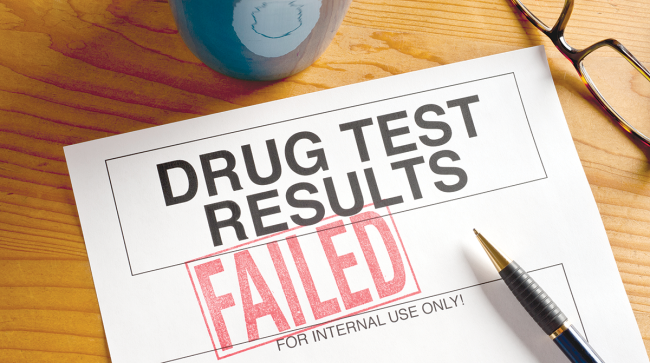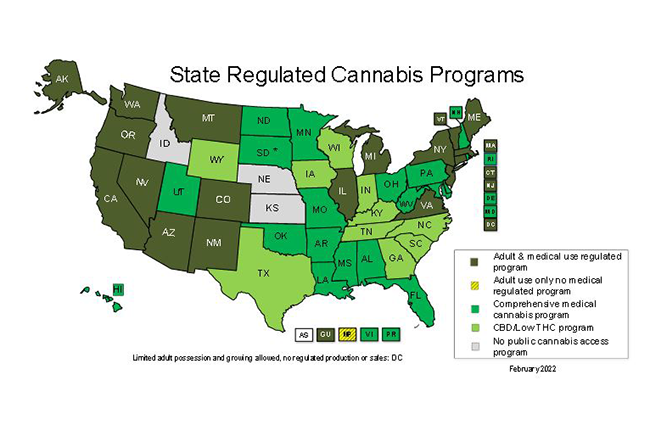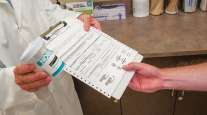Senior Reporter
Are Drivers Quitting After Positive Marijuana Tests?

[Stay on top of transportation news: Get TTNews in your inbox.]
The legalization of marijuana in several states and the post-pandemic economy have left the trucking industry with a bit of a perplexing, yet-to-be-solved mystery.
Thousands of truck drivers who have lost their jobs after testing positive for marijuana have not enrolled in return-to-work programs that would permit them to climb back into the cab — a situation that could be exacerbating an already critical driver shortage.
In the past two years, nearly 71,000 drivers have tested positive for marijuana. That’s more than 56% of all drug test failures over that span — which totaled more than 126,000 — and more than double the percentage represented by each of the other 13 drugs tested by the Department of Transportation. It dwarfs usage of an array of illegal drugs ranging from cocaine and methamphetamines to amphetamines and Oxycodone.

National Conference of State Legislatures
As of April 1, 89,000 of the more than 119,000 drivers who failed at least one drug test have yet to enroll in the return-to-work process. Only about 29,000 have completed the process and are eligible to drive again.
And the stakes are high; a truck driver caught using marijuana risks losing his or her job. Any use of marijuana is a regulatory violation that can result in significant legal liability for a motor carrier.
Marijuana is not the only culprit, but is by far is the most widely used drug of choice, and seemingly misunderstood as states continue to legalize pot.
As of Feb. 3, 37 states and the District of Columbia allow the medical use of cannabis products, according to the National Council of State Legislatures. For non-medical purposes, it is legal in 18 states and the District as of Nov. 29.

Horvath
“The number of drivers in a prohibited status, but more specifically, those who have not even begun the return-to-duty process is something we’ve been watching closely the last several months,” said Dan Horvath, vice president of safety for American Trucking Associations. “While there are likely many factors leading to that high number, I don’t believe that nearly 65,000 drivers have left the industry altogether.
“We have had discussions with the Federal Motor Carrier Safety Administration regarding this, and will continue to work with our members on educating the industry regarding the consequences of testing positive for controlled substances or alcohol.”
FMCSA said the Department of Transportation Drug & Alcohol Clearinghouse, first implemented in January 2020, is doing its job — making it tough for drivers who flunk drug tests to “job shop” for work with another carrier.

Host Michael Freeze discusses insurance coverage and costs with Jane Jazrawy of Carriers Edge and David Berno of Hub International. Tune in above or by going to RoadSigns.TTNews.com.
“Since FMCSA did not collect violation and return to duty data prior to the 2020 implementation of the Clearinghouse, we can’t yet quantify whether the number or percentage of drivers that decide to leave the industry after a drug or alcohol violation is materially different than in years prior to implementation of the Clearinghouse,” FMCSA said in a statement to Transport Topics.“The administration’s commitment to recruiting and retaining commercial motor vehicle drivers into the industry puts safety as a top priority. The use of marijuana and other Schedule I drugs pose serious safety risks to all drivers and the public on our nation’s highways.”
ATA, for one, has publicly voiced support for the Clearinghouse, even if it means fewer truck drivers on the road.
It appears that some of the drivers not returning to the road are seeking employment. So where are they going?
FMCSA doesn’t seem to know.
The general consensus is that some drivers who test positive drugs find the return-to-work process — which can take months — too difficult. To get their jobs back, drivers must first get an employer sponsor, get diagnosed and treated by a substance abuse professional and retake the drug test.

Enos
“I think some drivers are going to work at a place they don’t have to test,” said Paul Enos, CEO of Nevada Trucking Association, and a former member of ATA’s drug task force. He suggested that drivers either shift to driving box trucks or vans — which does not require a CDL — or pivot to construction work. He also believes many motor carriers are reluctant to rehire a driver who flunks a drug test, even if they enroll in a return-to-work process.
“It’s a shame, because they invest a lot of time and money in learning how to become a truck driver,” said Sean Garney, co-director of Scopelitis Transportation Consulting LLC. “But I do think it happens. The way the labor market is right now, you can go to most any town square and holler, ‘I want a job,’ and you’ll find one.”
“I think some drivers realize that with the Drug and Alcohol Clearinghouse — and the industry itself with the federal prohibition — is just too restrictive for them when states are so aggressively moving into recreational marijuana,” said Dan Murray, senior vice president of American Transportation Research Institute. “I think we’re going to see substantial shifts from over the road to regional and local — from 18-wheelers to straight trucks. And drivers will take a pay cut.”
Murray added, “I think we’re competing with some huge headwinds, which include this massive unrolling of recreational marijuana laws.”
Want more news? Listen to today's daily briefing below or go here for more info:




